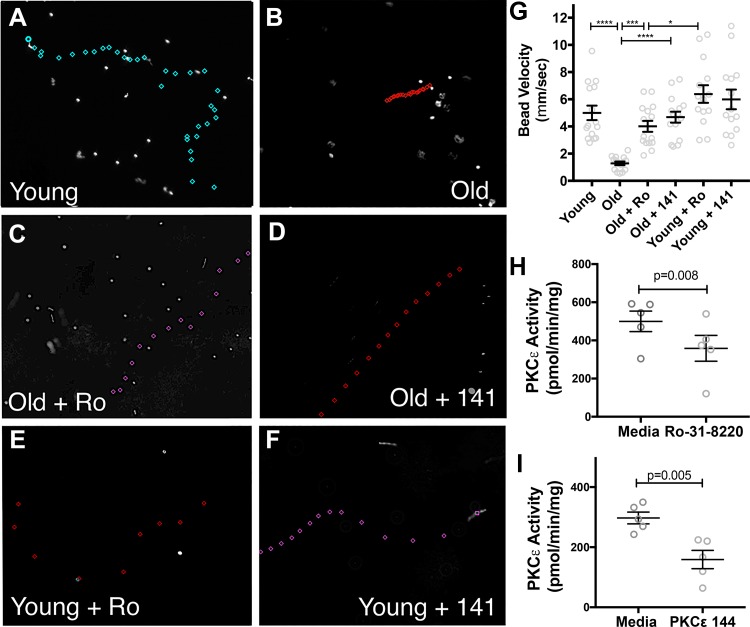Fig. 7.
Human air-liquid interface (ALI) from older donors has impaired bead clearance. Airway epithelial cells were collected from young (age 19–40 yr; n = 5) and older (age 65–82 yr; n = 5) donors and were cultured at ALI in triplicate. When they were fully ciliated, all mucus was washed off, and fluorescent beads were placed on the apex of the ciliated cells. High-speed video of the bead motion was collected, and the velocity of the beads was measured. In each frame, the position of the bead was marked, and the images were superimposed to show the path of the bead. Longer distances between the marks indicate faster speeds. Representative images of younger (A), older (B), older treated with the PKCε inhibitor Ro-31-8220 (Ro; 10 µM for 4 h) (C), and older cells treated with the PKCε inhibitor PKCε 141 (141; 200 µM for 4 h) are shown (D). Younger cells treated with Ro (10 µM for 4 h) (E). Younger cells treated with 141 (200 µM for 4 h) (F). The average velocity of the beads for each condition (n = 15) (****P < 0.0001, ***P = 0.003, *P = 0.01) (G). The bead velocity is slowed in the older cells and returns to baseline with both inhibitors of PKCε. Inhibition of PKCε in younger cells has little effect on bead transport velocity. H: PKCε activity is significantly decreased in cells from older donors with treatment with Ro (10 µM for 1 h). I: PKCε activity is significantly decreased in cells from older donors with treatment with PKCε141 (200 µM for 1 h).

